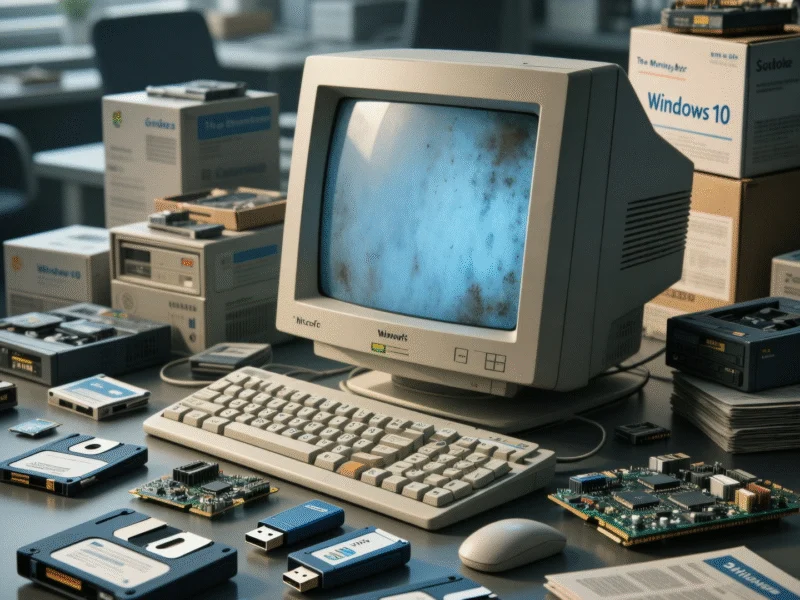Note: Featured image is for illustrative purposes only and does not represent any specific product, service, or entity mentioned in this article.
Breaking Down Industry Barriers Through Firmware Standardization
In a landmark collaboration that transcends traditional competitive boundaries, AMD and Intel have joined forces to develop the Open Silicon Firmware Interface (openSFI). This groundbreaking specification represents a significant shift in how silicon initialization is handled across different hardware platforms, potentially transforming the entire computing landscape.
The openSFI initiative establishes a common, architecture-neutral interface that allows host firmware to interact seamlessly with silicon initialization firmware. This approach enables modular, scalable, and vendor-agnostic integration of silicon into host firmware environments, addressing long-standing compatibility challenges that have plagued the industry for decades.
The Core Philosophy: Specification as Foundation
At its heart, openSFI functions as a foundational contract between host firmware and silicon initialization processes. The beauty of this approach lies in its simplicity – host firmware no longer needs to concern itself with the intricate details of how silicon initialization is implemented. Instead, it relies on a clean, stable API contract that ensures consistent function calls with proper inputs and deterministic outputs.
This standardization represents a fundamental rethinking of how industry developments in firmware architecture can drive broader ecosystem benefits. By creating this common ground, the specification enables firmware developers to focus on innovation rather than compatibility issues.
Strategic Objectives Driving the Collaboration
The openSFI specification targets several critical industry challenges through its well-defined objectives:
- Unified Interfaces: Creating consistent silicon initialization interfaces across multiple vendors
- Simplified Integration: Streamlining host firmware integration processes
- Cross-Platform Reusability: Enabling host firmware to work across different platforms and vendors
- Cost Reduction: Minimizing engineering costs, eliminating duplication, and reducing validation overhead
- Sustainability Focus: Promoting efficient resource usage through common tooling and standardized approaches
Broader Industry Implications
This unprecedented alliance between two semiconductor giants signals a maturation of the computing industry, where cooperation on foundational technologies benefits the entire ecosystem. The initiative comes at a time when broader technological transformations are reshaping how industries approach standardization and interoperability.
The timing of this collaboration is particularly noteworthy, as it aligns with other significant strategic shifts in technology implementation across various sectors. These parallel developments suggest an industry-wide recognition that standardization drives innovation rather than limiting it.
Technical Implementation and Ecosystem Impact
From a technical perspective, openSFI’s architecture-neutral design means it can adapt to evolving hardware technologies without requiring fundamental redesigns. This forward-thinking approach ensures that the specification remains relevant even as computing architectures continue to evolve.
The initiative also addresses challenges that have emerged alongside other recent technology platform updates that have highlighted the importance of stable, well-defined interfaces in complex computing environments.
Future Outlook and Market Transformation
This collaboration between AMD and Intel represents more than just a technical specification – it’s a strategic move that could redefine competitive dynamics in the semiconductor industry. By working together on foundational technologies, both companies acknowledge that some challenges are better solved collectively than individually.
The unprecedented nature of this alliance between traditional rivals demonstrates how market leaders are recognizing the value of cooperation in establishing industry standards that benefit all stakeholders, from manufacturers to end-users.
As the specification gains adoption, we can expect to see reduced development cycles, improved system stability, and greater innovation in firmware development. This initiative sets a powerful precedent for how competing companies can collaborate on foundational technologies while still competing vigorously on implementation and performance.
The openSFI specification represents a significant step toward a more unified, efficient, and innovative computing ecosystem that could ultimately benefit every segment of the technology industry.
This article aggregates information from publicly available sources. All trademarks and copyrights belong to their respective owners.



